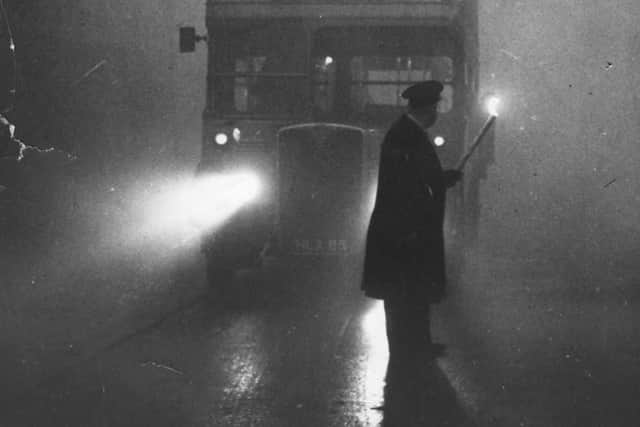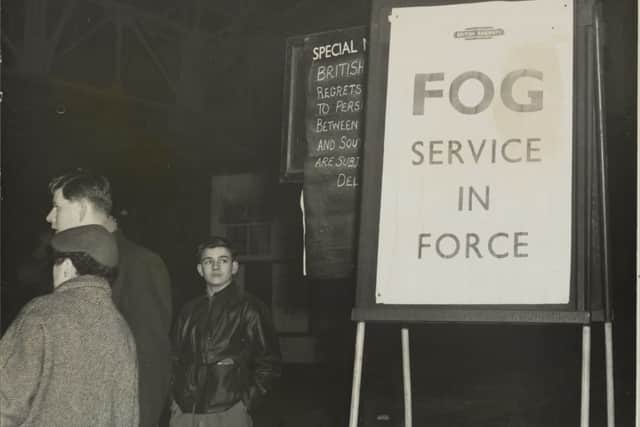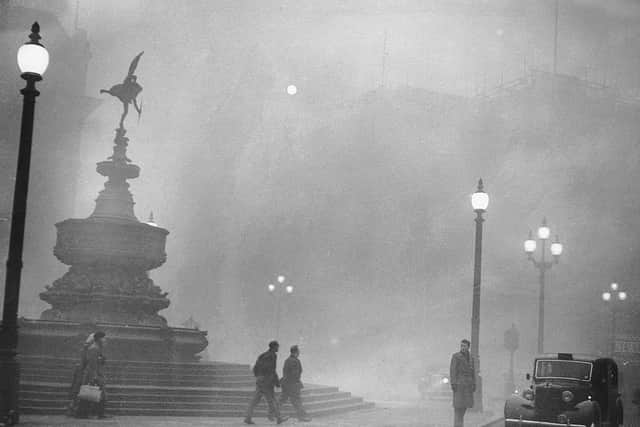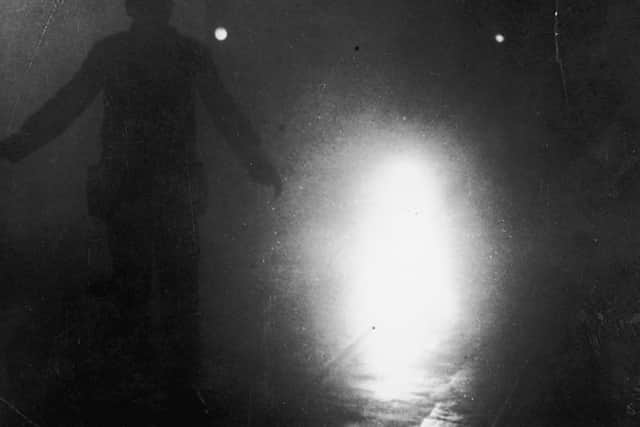The Great Smog of London: 70 years on from historic air pollution event
70 years ago today, London was hit by one of the worst air quality disasters ever experienced in the UK.
The Great Smog of 1952 started on December 5 and lasted for five days.
Advertisement
Hide AdAdvertisement
Hide AdA fog so thick and polluted it was responsible for more than 4,000 deaths with 100,000 people made ill, leading to life-long conditions for many.


The smoke-like pollution was so toxic it was even reported to have choked cows to death in the fields.
Air pollution is still a major problem in the capital today, but new laws aim to significantly reduce the level of toxicity in the capital’s air.
London’s history of smog
London has long been affected by mists and fogs, but these became much more severe after the onset of the Industrial Revolution in the late 1700s.
Advertisement
Hide AdAdvertisement
Hide AdFactories emitted gases and huge numbers of particles into the atmosphere, which in themselves could be poisonous.
The pollutants in the air, however, could also act as catalysts for fog, as water clings to the tiny particles to create polluted fog, or smog.
There are reports of thick smog, smelling of coal tar, which blanketed London in December 1813.
Lasting for several days, people claimed you could not see from one side of the street to the other.
Advertisement
Hide AdAdvertisement
Hide AdA similar fog in December 1873 saw the death rate across London rise 40% above normal.
Marked increases in death rate occurred, too, after the notable fogs of January 1880, February 1882, December 1891, December 1892 and November 1948.


What was the great smog of London?
On December 5 1952, an anticyclone settled over London.
This pushes air downwards, warming it as it descends. This creates an inversion, where air close to the ground is cooler than the air higher above it
Consequently, the emissions of factories and domestic fires could not be released into the atmosphere and remained trapped near ground level.
Advertisement
Hide AdAdvertisement
Hide AdThe result was the worst pollution-based fog in the city’s history.
During the five day event transport was restricted, including ambulances, and people were forced to abandon their cars in the street.
Due to low visibility, crime on the street also increased.
Press reports claimed cattle at Smithfield had been asphyxiated by the smog.
About 4,000 people were known to have died as a result of the fog, with 100,000 people made ill, leading to life-long conditions for many.


What was the Clean Air Act?
Advertisement
Hide AdAdvertisement
Hide AdFollowing the devastation caused by the Great Smog, a series of laws were brought in to avoid a repeat of the situation.
These included the Clean Air Acts of 1956 and 1968.
The act established smoke-free areas throughout the city and restricted the burning of coal in domestic fires as well as in industrial furnaces.
Moreover, homeowners were offered grants that would allow them to switch to different heating sources, such as oil, natural gas, and electricity.


Impact of the Clean Air Acts
A study published by City Hall has shown what air quality could have looked like in the capital if the Clean Air Acts hadn’t been passed.
Advertisement
Hide AdAdvertisement
Hide AdThe study looked at what the present-day concentrations of air pollutants, like nitrogen dioxide (NO2) and particulate matter (PM2.5 and PM10) would have been.
The report showed that without the legislation, there would be an additional 1,633 additional deaths per year, an estimated additional 2,979 cardiovascular hospital admissions and an estimated additional 3,392 respiratory hospital admissions per year.
70 years ago, the main causes of concern were smoke and sulphur dioxide arising from coal combustion from domestic fireplaces, power stations and industrial furnaces.
Today the principal source of pollution in London is road traffic, contributing to 44% of emissions.
Advertisement
Hide AdAdvertisement
Hide AdOne of the key policies to cleaning up London’s air is the introduction of the Ultra Low Emission Zone (ULEZ).
The mayor of London, Sadiq Khan introduced this policy in 2019 and last month he confirmed plans to expand the ULEZ London-wide in August 2023.
Check if your vehicle meets the standards at https://tfl.gov.uk/modes/driving/check-your-vehicle/
